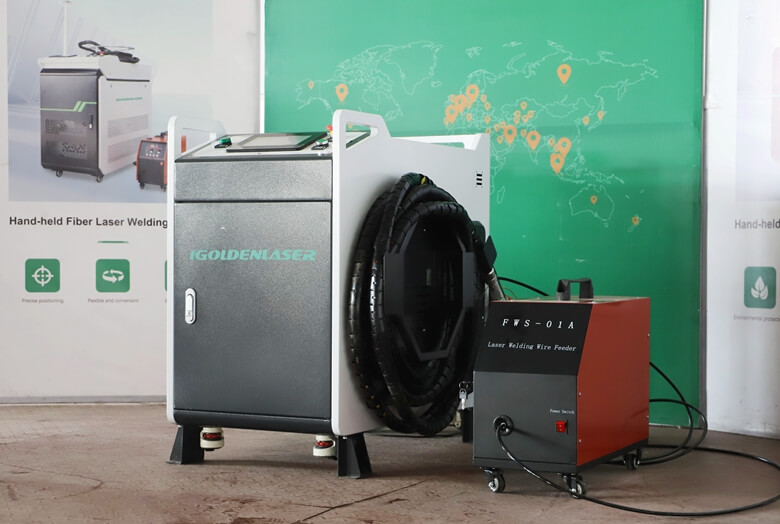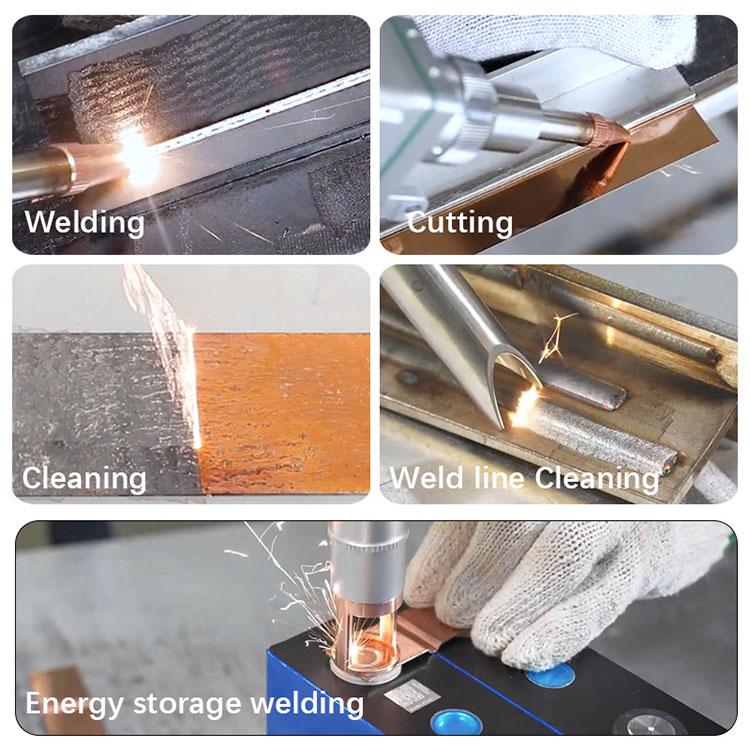Buyer Guide
Laser Welding Machine for Lithium Battery and Cylindrical Cells
Laser welding technology plays a vital role in the manufacturing of lithium-ion batteries, which are known for their high energy density, long cycle life, low self-discharge, lack of memory effect, and minimal environmental impact. These batteries find widespread use in various electronic devices (such as mobile phones, laptops, PDAs, digital cameras, and camcorders) and transportation vehicles (patrol cars, electric bicycles, electric cars, etc.). Lithium-ion batteries have become a key supported industry in China’s energy sector.
Lithium Battery Laser Welding Machine
Laser welding technology is an advanced processing technology for the production of high-performance power batteries. Since power batteries need to have multiple welding parts and it is difficult to carry out high-precision requirements met by traditional welding methods, laser welding technology can weld welds with high quality and automation due to the characteristics of small welding consumables loss, small deformation, strong stability and easy operation. Applied to the welding e-mobility battery, it can greatly improve the safety, reliability and service life of the battery.

Laser welding has proven to be a valuable technique for the assembly of lithium-ion batteries, offering high precision, speed, and minimal heat input. Its applications range from joining battery tabs and terminals to sealing battery enclosures. By addressing the challenges associated with process optimization, material compatibility, and safety considerations, laser welding can contribute to the production of high-performance and reliable lithium-ion battery systems.

From the manufacturing of lithium-ion battery cells to battery pack assembly, welding is a crucial manufacturing step. The conductivity, strength, airtightness, metal fatigue resistance, and corrosion resistance of lithium-ion batteries are typical quality evaluation criteria for battery welding. The choice of welding methods and processes directly affects the battery’s cost, quality, safety, and consistency. Laser welding, with its advantages of safety, precision, and environmental friendliness, has become the preferred solution for many welding tasks in the lithium battery industry.
Lithium Ion Battery Laser Welding Features
1.High Precision: Laser welding offers exceptional control over the energy input and weld geometry, resulting in precise and consistent welds. This level of precision ensures reliable electrical connections and enhances battery performance.
2.Speed and Productivity: The rapid heating and cooling cycles of laser welding enable fast assembly, making it suitable for high-volume battery production. Additionally, the automation potential of laser welding systems further enhances productivity.
3.Minimal Heat Input: Laser welding generates minimal heat input compared to traditional welding techniques. This reduces the risk of thermal damage to temperature-sensitive battery components, such as electrolytes, separators, and active materials.
4.Hermetic Sealing: Laser welding can create robust and leak-proof seals, critical for maintaining the integrity of lithium-ion batteries. The high-energy laser beam enables deep penetration welding, ensuring a strong bond between the joined materials.

Lithium-ion batteries often involve the joining of dissimilar materials, such as copper and aluminum. Laser welding offers an effective solution for these dissimilar material combinations, as it can generate strong and reliable welds between different metals. The localized heat input of laser welding reduces the potential for intermetallic reactions and enables the creation of robust joints.
Applications of Lithium Battery Laser Welding Machine
1. In EV: With the increasing popularity of electric vehicles, there is a growing demand for high-performance and high-safety batteries.
2. in the energy storage industry: storage systems are a crucial focus in the future of energy development. Laser welding for storage batteries can offer a more reliable and secure battery connection solution for energy storage systems.
3. Liquid cooling plates: The performance of liquid cooling plates can impact the performance of power batteries. As the structure of liquid cooling plates becomes more diverse, the requirements for welding processes are increasingly demanding.
4. in the electronics industry: As people rely more on portable electronic devices, the demand for high-performance and high-capacity batteries continues to grow. Laser welding machine for lithium batteries can provide more stable and efficient battery solutions for electronic products.
Laser welding technology plays a vital role in the manufacturing of lithium-ion batteries, which are known for their high energy density, long cycle life, low self-discharge, lack of memory effect, and minimal environmental impact. These batteries find widespread use in various electronic devices (such as mobile phones, laptops, PDAs, digital cameras, and camcorders) and transportation vehicles (patrol cars, electric bicycles, electric cars, etc.). Lithium-ion batteries have become a key supported industry in China’s energy sector.
Welding Techniques in the Lithium-ion Battery Industry
Ultrasonic welding utilizes mechanical vibrations generated by high-frequency vibrations (usually above 20 kHz) to heat the welded joints, melting and joining the materials together. In lithium battery production, ultrasonic welding is commonly used to connect battery cells to electrode foils, electrode cells to electrolyte films, and battery cells to battery casings and other components. It provides a highly accurate and stable weld, avoiding thermal damage and the introduction of impurities.
Laser welding uses a laser beam to heat the weld joints to a high temperature, causing the materials to melt and join together. Laser welding offers high energy density and joint precision. Laser welding is commonly used to join components such as electrode foils, battery casings, and battery connecting tabs. It provides non-contact, high precision and high speed welding for a wide range of different materials and complex geometries.
Resistance welding is a welding method that heats and joins two materials by generating heat through the material with an electric current. Resistance welding is commonly used to weld components such as battery cells to electrode foils and battery cells to connecting tabs. It is a common welding method, but requires proper control to avoid overheating and thermal damage.
TIG welding uses the high temperatures generated by the arc to melt the weld material, while an inert gas (usually argon) is used to protect the weld area from oxidation. TIG welding is commonly used to join components such as battery cases, battery covers, and battery leads.

I used to be able to find good information from your blog articles.